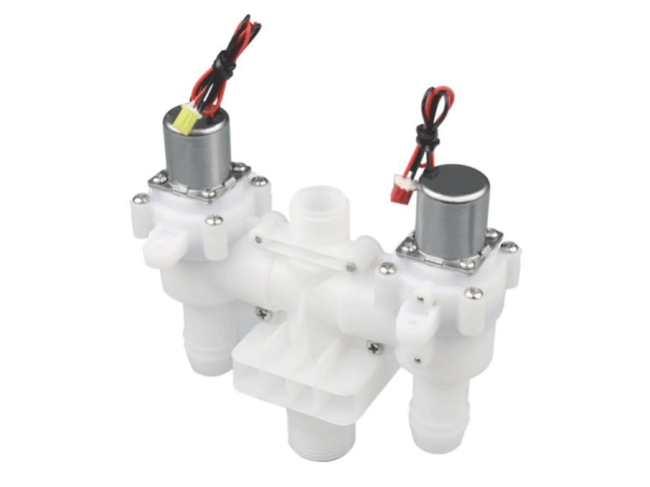Pulse valve refers to a diaphragm valve that is controlled by a pilot valve such as electromagnetic or pneumatic, which can instantly open and close a high-pressure gas source to generate pulses.
The pulse valve is the main component of the bag filter, and it blows more than 1 million times.
Pulse valve: It is a valve that relies on the airflow through the air resistance and the delay effect of the air volume to turn the long input signal into a pulse signal.
Pulse valves are divided into right-angle pulse valves and submerged pulse valves.
The high-pressure gas is connected from the air inlet and enters the lower air chamber.
1. When the pulse valve is not energized, the gas enters the decompression chamber through the submerged pulse valve and the throttle hole in the constant pressure pipeline of the upper and lower shells. Because the valve core blocks the pressure relief hole under the action of the spring, The gas will not be discharged, so that the pressure of the decompression chamber and the lower gas chamber are the same, and under the action of the spring, the diaphragm will block the blowing port and the gas will not rush out.
2. When the pulse valve is energized, the valve core is lifted up under the action of the electromagnetic force, the pressure relief hole is opened, and the gas is ejected. Due to the effect of the constant pressure pipe orifice, the outflow speed of the pressure relief hole is greater than that of the pressure relief chamber. The inflow speed of the pressure pipe gas makes the pressure of the decompression chamber lower than the pressure of the lower gas chamber, and the gas in the lower gas chamber pushes up the diaphragm, opens the blowing port, and performs gas blowing.

The spring on the spool of the pulse valve is easily damaged. The appearance is that the pulse valve deflates to the blowing port for a long time. The treatment is to replace the spring.
After a long time of use, the rubber pad on the spool of the pulse valve is easily damaged. The appearance is that the pulse valve deflates to the blowing port for a long time. The treatment method is to replace the rubber pad.
Due to the unclean air intake, the dirt on the spool will accumulate. The appearance is that the impulse valve does not operate after long-term air intake at the injection port or the pulse valve does not operate after being energized. The treatment is to clean the spool.
After long-term work, the diaphragm is easy to fatigue and oxidize. The appearance is that the pressure relief port is vented for a long time and the pulse valve does not work. The treatment method is to replace the diaphragm.
The air intake is not clean, which will easily cause the orifice to be blocked. The appearance is that the pulse valve will vent air to the nozzle for a long time. The treatment method is to clean the orifice; the orifice is damaged or missing, making the orifice Loss of the retention effect causes abnormal pressure relief. The appearance is that the pulse valve is activated after power-up, and the pressure relief port is vented, but the pulse valve does not blow. The treatment is to replace the orifice.
The above information is provided by the pulse valve supplier.